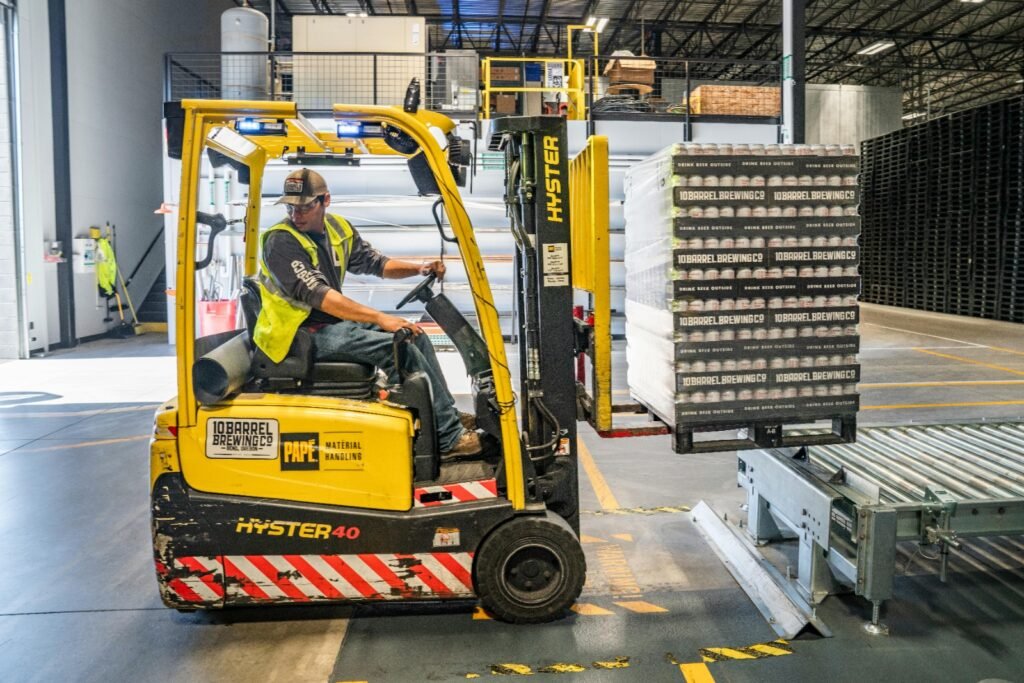5 Ways You Can Optimize Warehouse Management
Efficient warehouse management is essential for businesses that want to maintain smooth operations, minimize costs, and enhance customer satisfaction. Whether you’re managing a small storage facility or a large distribution center, optimizing your warehouse processes can lead to significant improvements in productivity and profitability.
With the rise of e-commerce and increasing consumer expectations for fast and accurate deliveries, effective warehouse management has become more critical than ever. If you’re looking to improve your warehouse operations, here are five ways you can optimize warehouse management to stay competitive and efficient.
—
1. Implement a Warehouse Management System (WMS)
One of the most effective ways to optimize warehouse operations is by using a Warehouse Management System (WMS). A WMS is a software solution designed to streamline and automate various warehouse processes, including inventory tracking, order picking, and shipping. Here’s how it can help:
– Inventory Accuracy: A WMS provides real-time data on stock levels, reducing errors caused by manual inventory management.
– Improved Productivity: The system can optimize picking routes, helping workers fulfill orders faster.
– Better Space Utilization: A WMS analyzes your warehouse layout and suggests the most efficient storage solutions.
Investing in a WMS can significantly reduce overhead costs and improve order accuracy, which directly impacts customer satisfaction.
—
2. Optimize Warehouse Layout and Design
An efficient warehouse layout is the backbone of effective warehouse management. Poorly designed spaces can lead to wasted time, increased labor costs, and logistical headaches. To optimize your warehouse layout:
– Analyze Workflow: Study the flow of goods from receiving to shipping. Arrange storage areas, picking zones, and packing stations to minimize unnecessary movement.
– Group Similar Items: Place frequently picked items in easily accessible areas and group similar products together to reduce picking time.
– Use Vertical Space: Install high-quality shelving or racks to maximize vertical storage, freeing up valuable floor space.
– Create Clear Aisles: Ensure there’s enough space for equipment like forklifts and carts to move freely without causing congestion.
Regularly reviewing and adjusting your warehouse layout can help accommodate growth and improve operational efficiency.
—
3. Adopt Automation and Technology
Automation and advanced technology are transforming warehouse management by improving speed, accuracy, and cost-efficiency. Some key technologies to consider include:
to consider include:
– Automated Guided Vehicles (AGVs): These machines can transport goods throughout the warehouse, reducing manual labor.
– Robotic Picking Systems: Robots can efficiently pick and pack orders, especially during peak seasons when demand is high.
– Barcode and RFID Technology: Use barcodes or RFID tags to track inventory in real-time, reducing errors and speeding up inventory audits.
– IoT Devices: Internet of Things (IoT) sensors can monitor environmental conditions like temperature and humidity, ensuring sensitive goods are stored appropriately.
While the initial investment in automation may be high, the long-term benefits in terms of reduced labor costs and increased efficiency make it a worthwhile endeavor.
—
4. Improve Inventory Management
Effective inventory management is crucial for preventing overstocking or stockouts, both of which can disrupt operations and hurt your bottom line. Here are some ways to improve inventory management:
– **ABC Analysis**: Categorize inventory into three groups:
– A: High-value items with low sales frequency.
– B: Moderate-value items with moderate sales frequency.
– C: Low-value items with high sales frequency.
Focus on managing A items closely, as they have the most significant impact on profitability.
– Just-In-Time (JIT) Inventory: Reduce holding costs by receiving goods only as needed for production or customer orders.
– Regular Audits: Conduct regular physical inventory counts to ensure the accuracy of your digital records.
– **Demand Forecasting**: Use historical data and market trends to predict demand and adjust stock levels accordingly.
Proper inventory management minimizes waste, reduces costs, and ensures products are always available when needed.
—
5. Train and Empower Your Workforce
Your warehouse workforce plays a crucial role in the overall efficiency of your operations. Investing in training and empowering your employees can lead to improved performance and job satisfaction. Consider the following steps:
– Provide Comprehensive Training: Ensure employees are well-trained in warehouse operations, safety protocols, and the use of any technology or equipment.
– Encourage Collaboration: Foster a team-oriented environment where workers feel valued and motivated to contribute ideas for improvement.
– Set Clear Performance Goals: Define measurable goals and offer incentives for achieving them, such as bonuses for meeting accuracy or efficiency targets.
– Leverage Employee Feedback: Regularly ask for input from workers on the floor—they often have valuable insights into areas that need improvement.
A skilled and motivated workforce can significantly enhance productivity and reduce operational errors.
—
Additional Tips for Warehouse Optimization
– Track Key Performance Indicators (KPIs): Monitor metrics such as order accuracy, pick-and-pack time, and inventory turnover to identify areas for improvement.
– Reduce Energy Costs: Optimize lighting, heating, and cooling systems to cut down on energy expenses without compromising safety or comfort.
– Plan for Peak Periods: Use historical data to prepare for busy seasons, ensuring you have adequate staff and inventory on hand.
—
Conclusion
Optimizing warehouse management is an ongoing process that requires a combination of technology, strategy, and workforce development. By implementing a Warehouse Management System, improving your layout, adopting automation, refining inventory management, and empowering your team, you can create a streamlined and efficient operation that meets customer demands while minimizing costs.
As businesses face increasing competition and consumer expectations, investing in better warehouse management is no longer optional—it’s essential. Take the time to analyze your current processes and identify opportunities for improvement. The results will not only enhance your bottom line but also ensure long-term success in today’s fast-paced marketplace.
